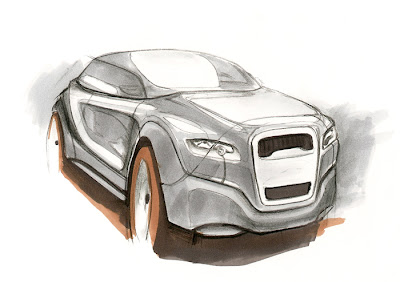Apparels - combination of complexity
I was again going through the products map and stumbled upon apparels design. How could strategic design processes give value for an apparels company? Started to figure out the design processes used and realized that the design is quite often purely focusing on the usability/usable details and not so much perhaps on design language itself, at least on heavy duty backpacks etc.
How could a design language become the driving force for apparels design? Of course, in heavy duty goods, the design language seconds the usability and durability, but perhaps one could go through this sort of language that actually supports the features. Using certain forms on openings and vents and also using som semanthic forms to guide the user through the inevitable complexity. Some sort of layered design language could perhaps be the best option. Topped with some great concepts, a good product for a design company to offer!
However, I made some sketches, too.. just fast with ballpoint and markers..










